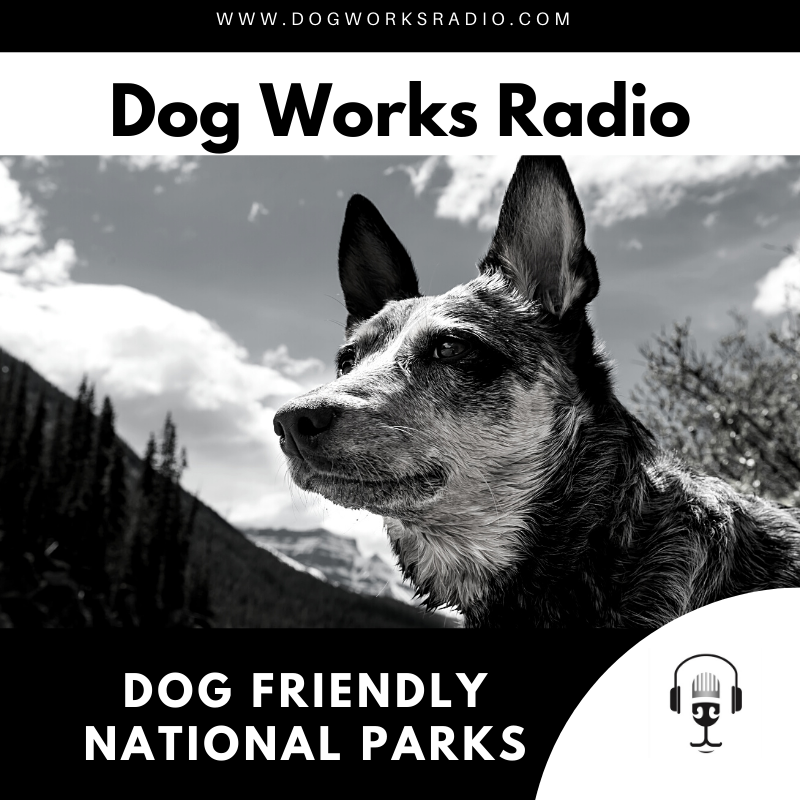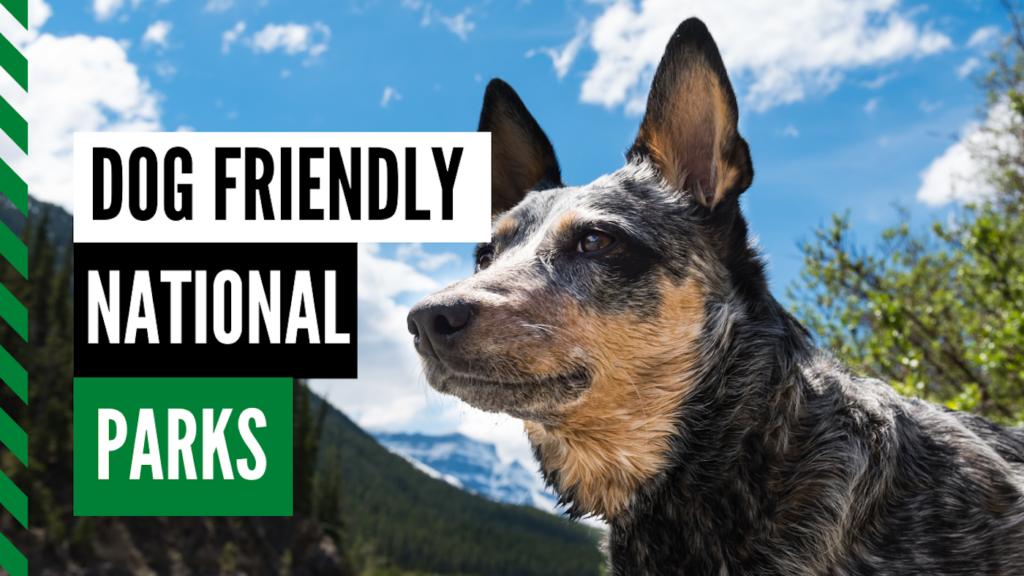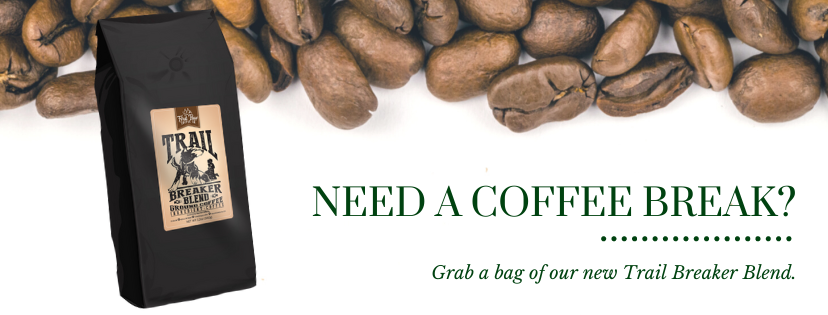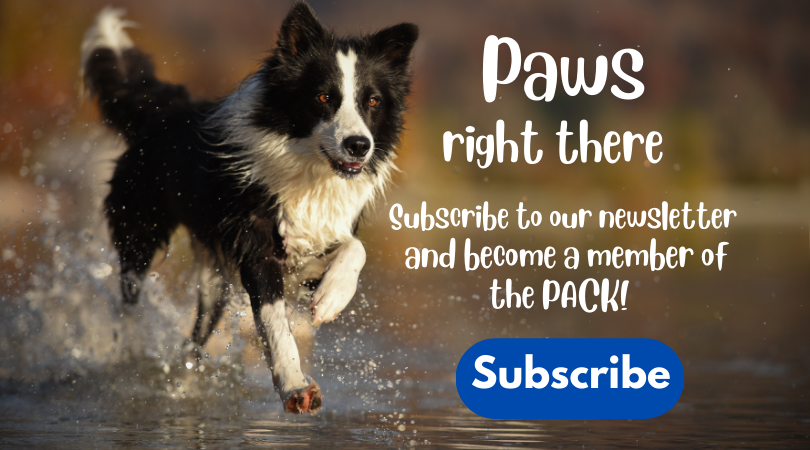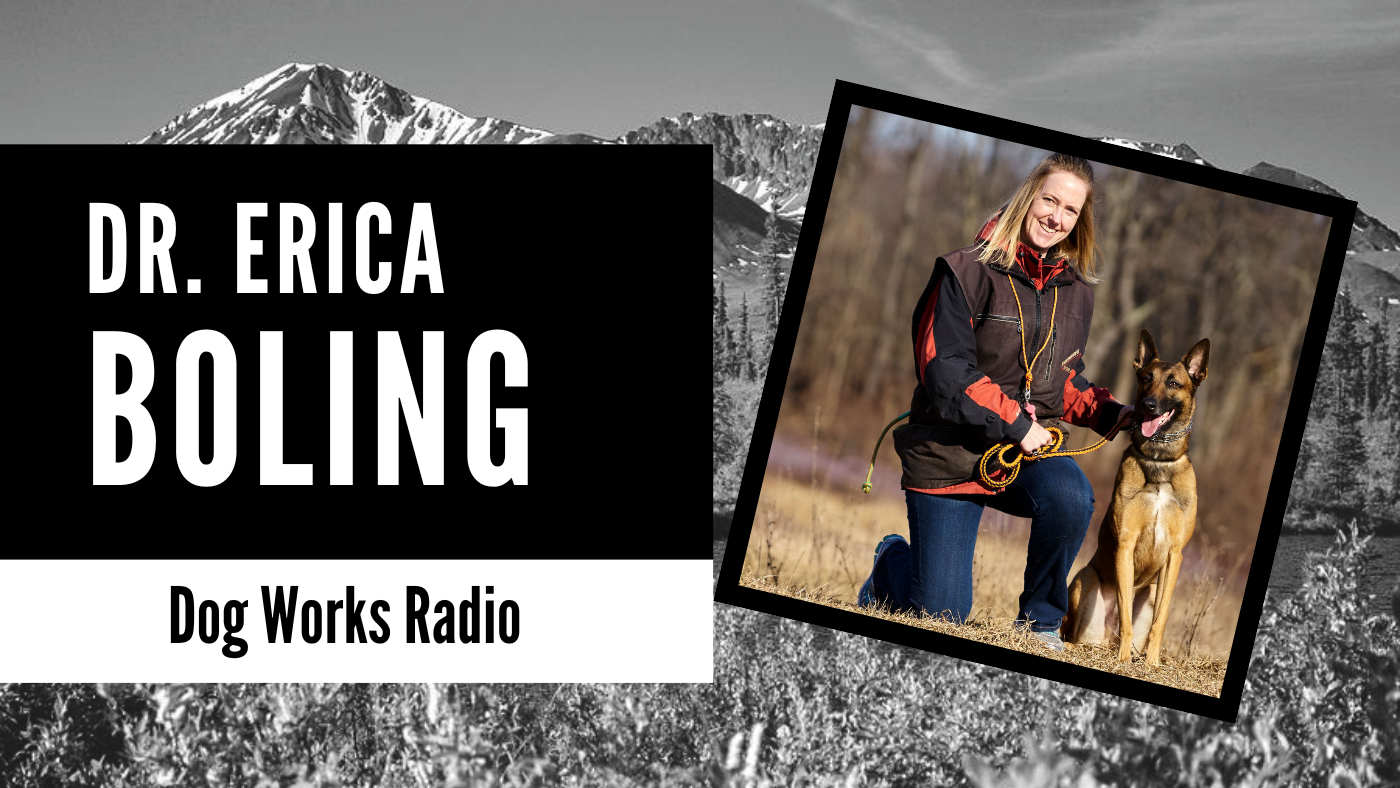Join host Michele Forto as she presents Dog-Friendly National Parks
Your best friend is all in when it comes to any adventure, so imagine the tail wagging in store if you exchanged your usual jaunts for a journey to one of the United States best national parks for dogs.
Pets are allowed in all of the national parks to some degree or another, but there are usually strict regulations on where you can go with your four-legged friend. The rules are intended to ensure the safety of the parks’ wildlife, natural resources, other visitors, park employees, and your pet. These vast parks are home to regional predators, hazardous plant life, and rough, uneven terrain — all of which can prove dangerous to dogs.
What we talk about on this episode:
- Rules for dogs in national parks
- Visiting the Grand Canyon with your dog.
- Are dogs allowed at Yosemite National Park?
- Behind the Breed: Vizsla
There are, however, national parks where you and your dog can savor nature’s grandeur safely and fully. If the thought of hiking with your dog past stunning vistas or through primeval forests captures your imagination, stay tuned to discover the best national parks to visit with your best pal and how to prepare for these walks of a lifetime. Stick around until the end and you will learn all about how the supremacy of Magyar cavalry was predicated on three qualities: speed, agility, and toughness. Accordingly, Magyar warriors carefully bred these qualities into their horses—and their dogs.
Hello and welcome to Dog Works Radio. My name is Michele Forto and I am the lead trainer of Alaska Dog Works. We help humans and their dogs have the best relationship possible. Since it is almost spring and in the era of social distancing, there is plenty to do in the outdoors with your dog. One of those activities includes a dog-friendly national park. These spaces dotting around the country are the perfect getaway when you feel the need to take a road trip. Oh, by the way, have you tried our brand new road trippin blend by First Paw coffee. Stay tuned and you will learn all about it.
HIKING WITH DOGS: TRAINING & SAFETY
There is no point in heading to one of these breathtaking destinations with an overexcited dog who exhibits minimal self-control. Before you go, be sure to read up on hiking safely with a dog so you and your best pal are prepared for this excursion and you have all the dog safety gear you’ll need before setting off from the trailhead.
The exception to the rules: The access restrictions at the national parks do not apply to service animals. It’s a good idea to let the park’s rangers know you are bringing a service animal in advance, so they can be prepared. There are sometimes particular routes to scenic locations for service animals, such as below the rim of the Grand Canyon where pets are prohibited.
NATIONAL PARK DOG RULES:
- The majority of national parks prohibit pets from hiking trails and backcountry.
- Most of the parks, however, allow dogs and pets in campgrounds, picnic areas, at paved scenic viewpoints, and on the paved roads that lead to these developed park locations.
- In all parks, dogs must wear a collar or harness attached to a leash no more than six feet at all times.
- Dogs should wear a personalized collar or identification tags with contact and medical information.
- Dogs should never be left unattended.
- Dogs should never be left in parked cars.
- Owners are expected to maintain strict control of their dogs so they don’t threaten wildlife or other park visitors.
- Extensive, ongoing barking is prohibited, as this can threaten wildlife and disrupt the peaceful environment people visit national parks to enjoy.
- Pet owners are expected to pick up after their dogs diligently.
- Pets are not allowed on ranger-led programs.
- Pet and human food should be stored in food lockers to avoid attracting predators.
- Pets are not allowed in public buildings.
- Pet owners not adhering to regulations may receive a citation.
Fast Fact: In the entire national park system, only Golden Gate National Recreation Area in California allows canines to romp off-leash, at the park’s dog-friendly beach beneath the Golden Gate Bridge.
Once you understand the unique preparations and considerations involved in taking your dog to a national park, it’s time to choose your destination. Below are the national parks with the most open policies for dog visitors. In the parks on this list, dogs are a common sight and you’ll be at ease knowing you and your best friend are in welcoming territory.
THE MOST DOG-FRIENDLY NATIONAL PARKS:
ACADIA NATIONAL PARK – MAINE
Located in Maine near Bar Harbor, Acadia is one of the most dog-friendly parks in the National Park System. At 49,000 acres, it is one of the smallest national parks. Acadia is treasured for its rugged, rocky coastline skirting the Atlantic Ocean, as well as its rounded mountains, lakes, and valleys sculpted by massive glaciers, some as much as two miles thick, that flowed over the region 20,000 years ago.
- Dogs on a leash have full access to 100 miles of hiking trails and 45 miles of carriage roads throughout the park.
- Dogs are allowed at the top of Acadia’s Cadillac Mountain, which is the highest point in the park at 1,530 feet and offers gorgeous views of Somes Sound off Bar Harbor.
- There are several “ladder” trails that people with dogs cannot access because they require vertical climbs up rungs set in the rock face.
- There are also multiple trails that are not recommended for pets by the park service. Though they are not prohibited, they should be tackled only by experienced four-legged hikers and their owners.
- Dogs and people are not allowed to swim in the many lakes of Acadia as most of them are public water supplies.
- Some, not all, campgrounds are open to pets.
SHENANDOAH NATIONAL PARK – VIRGINIA
Only 75 miles outside of Washington, D.C., Shenandoah is a peaceful oasis that includes 300 square miles of the Blue Ridge Mountains. It is a destination park for avid hikers and offers miles of dog-friendly trails. In Shenandoah, you and your best friend can hike past cascading waterfalls, through quiet woodlands, and along trails that offer gorgeous views of the Appalachians.
- Leashed dogs have access to 480 of the 500 miles of hiking trails in the park.
- Be prepared for the possibility of an encounter with a bear or a snake.
- Pets are allowed in all campgrounds and pet-friendly accommodations are available.
YOSEMITE NATIONAL PARK – CALIFORNIA
The almost 1,200 square miles of this expansive park in the High Sierras include beautiful waterfalls, a deep, mile-wide valley cut by the Merced River, giant sequoias, and the iconic granite monolith El Capitan. While trails are completely off-limits to dogs in Yosemite, pets are allowed in developed areas from which you’ll be able to enjoy the park’s legendary views.
- Leashed dogs are allowed on paved roads, sidewalks, and most bicycle paths.
- They are allowed in campgrounds, except walk-in and group campsites.
- Be prepared for the possibility of an encounter with a bear.
- Dogs are also allowed in Wawona and Hodgdon Meadow, which are lovely, lesser-known locales in the park.
GRAND CANYON NATIONAL PARK – ARIZONA
The Grand Canyon is an immense geological wonder that draws five million visitors each year. The canyon is one mile deep, 277 miles long as the Colorado River flows, and 18 miles wide at its broadest point.
- Leashed dogs are allowed on trails above the South Rim of the park.
- Pets are allowed in several of the park’s campgrounds.
- Pets are allowed in all developed sections of the park.
- Except for service animals, pets are not allowed below the rim of the canyon.
- A kennel is available in the park for people with pets who wish to hike the inner canyon.
CUYAHOGA VALLEY NATIONAL PARK – OHIO
Not far from Cleveland, this park was founded in 2000 and includes land that was formerly used as dumping grounds. The park wends along the Cuyahoga River, through dense forest, and over rolling hills and farmland. The Towpath Trail follows the route of the Ohio and Erie Canal. The park also features several historic sites, including the Canal Exploration Center and the Everett Covered Bridge.
- Dogs are allowed on 110 miles of the park’s hiking trails.
- Dogs are allowed on 20 miles of the historic Towpath Trail.
- Pets are allowed in the park’s campground.
ROCKY MOUNTAIN NATIONAL PARK – COLORADO
Alpine lakes shimmer amid the hundred peaks that rise within the boundaries of the park, including Longs Peak, which is 14,259 feet high. Wildlife, such as elk, bighorn sheep, moose, mountain lions, bobcats, and bears roam the region. In the warm months, the park blooms with sub-alpine wildflowers and tundra flowers.
- Dogs are allowed on paved roads, in picnic areas, and in developed areas, many of which command breathtaking views.
- Dogs are allowed in the park’s campgrounds.
ZION NATIONAL PARK – UTAH
Over millions of years, the Virgin River has cut the deep and narrow canyon at the heart of Zion. The colorful, sculpted cliff walls create a dramatic backdrop for varied plant life. The mesas of the park are home to 68 species of mammals, including foxes, bighorn sheep, rock squirrels, deer, and the kangaroo rat.
- Dogs on a leash are allowed on the Pa’rus Trail, which is a lovely 3.5-mile long paved path.
- The path is popular with bikers, so be alert if your dog gets overexcited when bicyclists pass by.
- Dogs are allowed in all the developed areas of the park.
- Zion gets extremely hot; be sure you are prepared to keep your dog hydrated and cool on the trail.
Understanding and respecting the regulations put in place to protect the wildlife and wilderness will help you get the most out of visiting a breathtaking national park with your dog. While you may not be able to enjoy every trail or take in every view, you and your dog are sure to take magnificent walks you’ll remember for a lifetime.
Ok guys let learn all about the Vizsla. Before we get started did you know that this breed is one of our top five adventure dogs? The Vizsla is easily recognized by his sleek golden-rust coat. They can stand between 21 to 24 inches at the shoulder and are the picture of a lean, light-footed hunter’s companion. The long, silky ears frame a facial expression that is sensitive and loving around the house and intense when at work. As a hunter expected to work closely with humans, Vizslas form a tight bond with their owners and hate to be left alone.
Athletes of many talents, Vizslas excel at various sports and activities. They are eager and graceful trotters of great stamina, making them ideal jogging or biking companions. An expert on the breed tells us, “If you don’t have the time to encourage this breed’s full use of its brain, you’re wasting a good dog.”
History
The Magyar people bolted from the Russian steppes sometime in the mid-800s and for 50 years ravaged Western Europe. These brutal marauders rampaged across the continent on horseback, leaving in their wake a wide swath of death and destruction. They ranged as far west as Paris and as far south as the toe of Italy, before settling in what is now Hungary.
The supremacy of Magyar cavalry was predicated on three qualities: speed, agility, and toughness. Accordingly, Magyar warriors carefully bred these qualities into their horses—and their dogs. In this lightning-fast kingdom on horseback, it was either keep up or perish. The Magyars’ nimble red dogs, ancestors of the modern Vizsla, kept up.
Over centuries, Hungarian nobles and warlords refined these dogs and set the type of the modern Vizsla. The breed became famous as a swift, all-purpose hunting dog who could do just about anything asked. In modern times, that eagerness has won Vizslas generations of American fans.
The first Vizsla to come to America, in 1950, was smuggled out of Communist Hungary with the help of a U.S. State Department employee. Fifty years later, a Vizsla named Chartay became the first dog in AKC history to earn championships in five different sports—a quintuple champion. It’s no wonder that the words “versatile” and “Vizsla” so often appear in the same sentence.
Quick Facts
- Temperament: Affectionate, Gentle, Energetic
- AKC Breed Popularity: Ranks 31 of 197
- Height: 22-24 inches (male), 21-23 inches (female)
- Weight: 55-60 pounds (male), 44-55 pounds (female)
- Life Expectancy: 12-14 years
- Group: Sporting Group
GENERAL APPEARANCE
That of a medium-sized, short-coated, hunting dog of distinguished appearance and bearing. Robust but rather lightly built, the coat is an attractive shaded golden rust. Originating in Hungary, the Vizsla was bred to work in fields, forests, and water. Agile and energetic, this is a versatile dog of power, drive, and endurance in the field yet a tractable and affectionate companion in the home. It is strongly emphasized that field-conditioned coats, as well as the brawny or sinewy muscular condition and honorable scars indicating a working and hunting dog, are never to be penalized in this dog. The requisite instincts and abilities to maintain a “dual dog” are always to be fostered and appreciated, never deprecated.
The Vizsla is a versatile, red-coated gundog built for long days in the field. For centuries, these rugged but elegant athletes have been the pride of Hungarian sportsmen and their popularity in America increases with each passing year.
Care
The Vizsla should do well on high-quality dog food, whether commercially manufactured or home-prepared with your veterinarian’s supervision and approval. Any diet should be appropriate to the dog’s age (puppy, adult, or senior). Most Vizslas are good eaters, and there is considerable variation in individual dogs’ caloric needs; a young, active dog may require four or five cups each day of high-calorie food, while older or less active dogs may need less than half that quantity. Some dogs are prone to getting overweight, so watch your dog’s calorie consumption and weight level. Treats can be an important aid in training but giving too many can cause obesity. Learn about which human foods are safe for dogs, and which are not. Check with your vet if you have any concerns about your dog’s weight or diet. Clean, fresh water should be available at all times.
Grooming
Vizslas have a short, sleek coat with no undercoat, so they don’t require complicated grooming. They do shed, and occasional brushing with a rubber grooming brush is helpful. When they get especially dirty (or when they roll in something smelly), they will need a bath with lukewarm water, a good-quality dog soap, and thorough rinsing. It is important to keep the toenails short, either with a clipper or with a grinding tool. Ears should be checked frequently for dirt, wax build-up, or signs of irritation. Regular use of a mild ear-cleaning product will help prevent problems. To keep teeth and gums healthy, regular cleaning is recommended; use a product formulated for dogs (not human toothpaste).
Exercise
Vizslas were bred to be active hunting dogs, and they need both physical and mental exercise. Individual dogs’ needs vary, but, in general, owners should plan on a minimum of 30 minutes of active exercise daily—and some dogs will need more than that. In addition to leash walks and games of fetch, most Vizslas need opportunities to run hard off-leash on a regular basis. Mental exercise is as important as physical activity, so training should be part of their routine. Vizslas can be excellent running or jogging companions, with the caveat that young dogs should not run long distances until they reach maturity at about 18 to 24 months. Older Vizslas typically remain active and playful.
Training
Vizslas need consistent, positive training, starting in puppyhood. They are highly intelligent, curious, and sometimes manipulative, so owners need to establish solid communication and teach good behavior. Untrained Vizslas are hard to live with. They can find many creative ways to get into trouble if they don’t have a “job.” Fortunately, they typically love training and thrive on the attention they receive. This is a sensitive breed, so early and ongoing socialization is important to make sure the dog has the confidence to enjoy various activities. With good socialization and consistent training, there are countless ways to have fun with these versatile dogs, including field trials, hunting tests, conformation, obedience, rally, agility, dock diving, barn hunts, lure coursing, scent work, and tracking.
Health
Vizslas are generally a healthy breed. A typical lifespan is about 12 to 15 years. As in all breeds—and in mixed breeds—cancers are a concern. Responsible breeders screen their stock for health conditions such as seasonal allergies; eye disorders, including melanosis or entropion; hip dysplasia; epilepsy; and ear infections. Careful breeders do their homework ahead of time for the best odds of producing sound, healthy pups.
Did You Know
- The Vizsla is also known as the Hungarian Pointer.
- The Vizsla was recognized by the AKC in 1960 and is its 116th breed.
- At the end of World War 1, the Vizsla was all but extinct.
- The importation of the breed into the United States began in the 1950s.
- The Vizsla is a multi-purpose dog that is suitable for work on upland game, rabbits, and waterfowl retrieving.
- The Vizsla is essentially a pointer in type with characteristics of a pointer and a retriever.
Want to learn how to train your Vizsla to be one of the best-trained dogs? Click here to find out how. Check out our website, Alaska dog works.com and click on the training tab.
It is now time our calendar of events. For those that are listening locally on KVRF or our current and past clients stay tuned for important announcements, for our other listeners, stick around and you might learn something cool.
March is Poison Prevention Awareness Month.
March 2 is our own, Robert Forto’s birthday. He is 50 years old. How time flies.
March 3: If Pets Had Thumbs Day. What in the world?!
March 7-13: Professional Pet Sitters Week.
In early April we will be at the Mat Su Outdoorsman show at the Alaska State Fairgrounds in Palmer for this three-day event. Come out and say hello. We like it when you say hi. We will also have all of our coffee blends on sale, a bunch of gear and you can learn all about our adventure dog club just in time for spring. We are excited about this one. It was canceled last year because of COVID but this year is supposed to be bigger than ever. Not only will we be there but there will be food trucks, live events, demonstrations, and much more. This is the premier event for anyone that is interested in getting outdoors in Alaska.
On April 17 we will be starting our group classes in the park. They will be held at wonderland park in Wasilla at 11:30 am. These are free for our current and past clients and are part of your training package. If you are not a client or just want to check us out, this is a great way. We do have a nominal drop-in fee.
We are gathering gear for our first ever nose work class and treiball and Robert is thinking about doing pack walks again too. If you want to get an idea of what we will be doing, head on over and watch the Pack on Amazon Prime Video. It is a really cool show!
Did you know that every Wednesday and Sunday night we do a Facebook live at 7 pm? Be sure to check us out. If you miss the live broadcasts you can always tune in later too.
Also, stay tuned for info about the summer festival, how you can train your dog to run in the Alaska dog works dryland derby this fall, and much more. As always you can keep up to date by following us on our social channels, just search dog works radio and for more training tips and tricks and to learn how to schedule a free discovery call to talk with us about how to make your dog one of the best, visit Alaska dog works.com
One last thing did you know the single best thing you can do is tell your family and friends about our show. Why don’t you send them a link to this episode and they too will soon be a rabid listener?
Host, Michele Forto’s Bio: Michele Forto is the lead trainer for Alaska Dog Works where they train dogs for service work, obedience, and more. Michele is also the business manager and husky wrangler for Team Ineka. When Michele is not training dogs she loves to travel on their annual Rock n Roller Tours where she and Robert hit up rock concerts and roller coasters around the country.
Host, Robert Forto’s Bio: Robert Forto is the training director for Alaska Dog Works where they train dogs for canine obedience, working dogs, therapy dogs, and service dogs for clients all over North America. He is also a dog musher and he and his wife operate a 36-dog mushing kennel in Willow, Alaska, called Team Ineka. They can often be seen at local races and leading expeditions in the Alaska backcountry with outdoor leadership students at the University of Alaska. Robert is the producer of Dog Works Radio that has been on the air since 2009 and is currently simulcast on a local radio station, KVRF in Palmer, Alaska.
Links and Resources Mentioned:
- RSS feed for our show: https://dogworksradio.libsyn.com/rss
- Alaska Dog Works
- First Paw Coffee
- Robert Forto on Twitter: @robertforto
- Dog Works Radio on Twitter: @dogworksradio
- Michele Forto on Twitter: @micheleforto
- Alex Stein on Twitter: @coldfootfilms
- Dog Works Radio on Facebook
- Dog Works Radio on Instagram
- KVRF in Alaska
Thanks for Listening! We appreciate your visiting our site today and for help in bringing awareness to the Dog Works Radio podcast
Where we are going? (In real life)
- Rock n Roller Coaster Tour 21 #rocknroller21 to live host The Coaster Geeks Podcast
- Podcast Movement 21 in Nashville in August #PM21
Audience feedback drives the show. We would love for you to email us and keep the conversation going! Email live@dogworksradio.com or call us at 907-841-1686
-
- We would love to hear from you!
Help us spread the word! We would love it if you could please share #DogPod with your Twitter followers. Click here to post a tweet If you dig this episode head over to Apple Podcasts and kindly leave us a rating or a review and subscribe!
Ways to subscribe to Dog Works Radio
Feedback and Promotion You can ask your questions, make comments, and request a show topic! Let your voice be heard.
-
- Email live@dogworksradio.com
- Book an interview on the show
- Take the Survey


